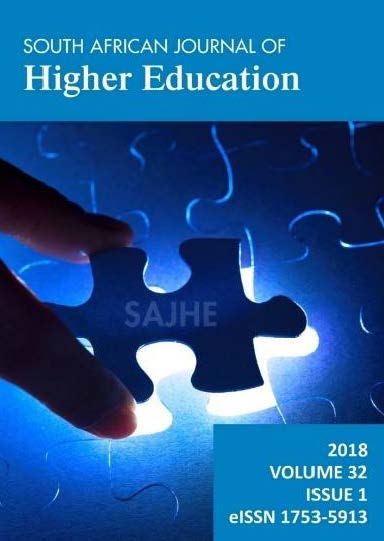Does a graph-intensive economics curriculum promote epistemological access to economic theory?
DOI:
https://doi.org/10.20853/32-1-1651Abstract
The paper evaluates whether graph-intensive pedagogic and assessment practices in introductory economics promote student learning. It evaluates the role of instructor-supplied graphs in the correct application and interpretation of graphs. Using simple linear and panel regressions on student assessment data for graph-based multiple choice questions and descriptive analysis based on written student answers, the paper finds that graph-intensive pedagogic and assessment practices hinder student learning and that there are gender and epistemological biases associated with them. While instructor-supplied graphic illustrations offer a solution, findings suggest a contrary adverse effect. Such supplementary materials are necessary but not sufficient in promoting deep learning. Combined with negative marking, graph dominated assessment practices encourage students to avoid answering graph-based questions, which undermines their performance.Downloads
References
Becker, W.E and Watts, M. 1996. Chalk and Talk: A National Survey on Teaching Undergraduate Economics. The American Economic Review 86(2): 448-453.
Becker, W.E. 2001. How to make economics the sexy social science. Chronicle of Higher Education 48(15).
Becker, W.E. 2003. How to Make Economics the Sexy Social Science (From Chronicle of Higher Education). Southern Economic Journal 70(1): 195-198.
Biggs, J. 1999. What the student does: Teaching for enhanced learning. Higher Education Research & Development 18(1): 57-75.
Cohn, E and Cohn, S. 1994. Graphs and Learning in Principles of Economics. The American Economic Review 84(2): 197-200.
Cohn, E., Cohn, S., Balch, D.C and Bradley, J, Jr. 2001. Do Graphs Promote Learning in Principles of Economics? Journal of Economic Education Fall: 299-310.
Cohn, E., Cohn, S., Balch, D.C and Bradley, J, Jr. c.2002. Student attitudes about graphs and their relation to performance in principles of economics. Joint Statistical Meetings - Business & Economic Statistics Section: 604-609.
Cohn, E., Cohn, S., Balch, D.C and Bradley, J, Jr. 2004. The Relation between Student Attitudes toward Graphs and Performance in Economics. The American Economist 48(2): 41-52.
Coyle, D. 2012. Economics education after the crisis: Are graduate economists fit for purpose? Available: http://www.res.org.uk/view/article5Apr12Correspondence.html [accessed 29 May 2016].
Coyle, D. 2014. The mainstream economics curriculum needs an overhaul. Available: http://voxeu.org/article/mainstream¬economics¬curriculum¬needs¬overhaul [Accessed 29 May 2016].
Croker, K., Andersson, H., Lush, D., Prince, R and Gomez, S. 2010. Enhancing the student experience of laboratory practicals through digital video guides. Bioscience Education 16(1): 1-13.
Hall, J and Lawson, R. 2008. Using music to teach microeconomics. Perspectives in Economic Education Research 4(1): 23-36.
Harter, C.L., Becker, W.E and Watts, M. 1999. Who Teaches with More than Chalk and Talk? Eastern Economic Journal 25(3): 343-356.
Inman, P. 2013a. Economics students aim to tear up free-market syllabus. The Guardian. Available: https://www.theguardian.com/business/2013/oct/24/students¬post¬crash¬economics [accessed 29 May 2016].
Inman, P. 2013b. University economics teaching to be overhauled. The Guardian. Available: https://www.theguardian.com/education/2013/nov/11/university¬economics¬teaching-overhaul [Accessed 29 May 2016].
Kourilsky, M and Wittrock, M.C. 1987. Verbal and graphical strategies in the teaching of economics. Teaching & Teacher Education 3(1): 1-12
Lawson, R., Hall, J and Mateer, G.D. 2008. From Abba to Zeppelin, Led: using music to teach economics. The Journal of Economic Education 39(1): 107.
Luckett, K. 2001. A proposal for an epistemically diverse curriculum for South African Higher Education in the 21st Century. South African Journal of Higher Education 15(2): 49-61.
Mann, S.J. 2001. Alternative Perspectives on the Student Experience: alienation and
engagement. Studies in Higher Education 26(1): 7-19.
Medcalfe, S. 2010. The relationship between music and student enjoyment of economics class: how to compete with Grand Theft Auto, Crack And Chlamydia! Journal of Economics and Economic Education Research 11(3):39-46.
Ojo, E and Jeannin, L. 2016. The way economics is taught needs an overhaul: a South
African case study. The Conversation.
Parker, J. 2003. Reconceptualising the curriculum: from commodification to transformation. Teaching in Higher Education 8(4): 529–543.
Snowball, J.D. 2014. Using interactive content and online activities to accommodate diversity in a large first year class. Higher Education 67: 823-838.
The Economist. 2013. Post-¬crisis economics: Keynes’s new heirs: Britain leads a global push to rethink the way economics is taught.
The NASB-Amplified parallel Bible. 2009. Peabody: Hendrickson Bibles.
University of Manchester Post-Crash Economics Society. 2014. Economics, Education and Unlearning: Economics Education at the University of Manchester.
Watts, M and Becker, W.E. 2008. A Little More than Chalk and Talk: Results from a Third National Survey of Teaching Methods in Undergraduate Economics Courses. The Journal of Economic Education 39(3): 273-286.
Wooldridge, J. 2002. Econometric analysis of cross section and panel data. MIT Press.
Zetland, D., Russo, C and Yavapolkul, N. 2010. Teaching economic principles: algebra, graph or both? The American Economist 55(1): 123-131.
Downloads
Published
How to Cite
Issue
Section
License
This journal is an open access journal, and the authors and journal should be properly acknowledged, when works are cited.
Authors, copyright holders, may use the publishers version for teaching purposes, in books, theses, dissertations, conferences and conference papers.
A copy of the authors' publishers version may also be hosted on the following websites:
- Non-commercial personal homepage or blog.
- Institutional webpage.
- Authors Institutional Repository.
The following notice should accompany such a posting on the website: This is an electronic version of an article published in SAJHE, Volume XXX, number XXX, pages XXX “XXX", DOI. Authors should also supply a hyperlink to the original paper or indicate where the original paper (http://www.journals.ac.za/index.php/SAJHE) may be found.
Authors publishers version, affiliated with the Stellenbosch University will be automatically deposited in the University Institutional Repository SUNScholar.
Articles as a whole, may not be re-published with another journal.
The following license applies:
Attribution CC BY-NC-ND 4.0





